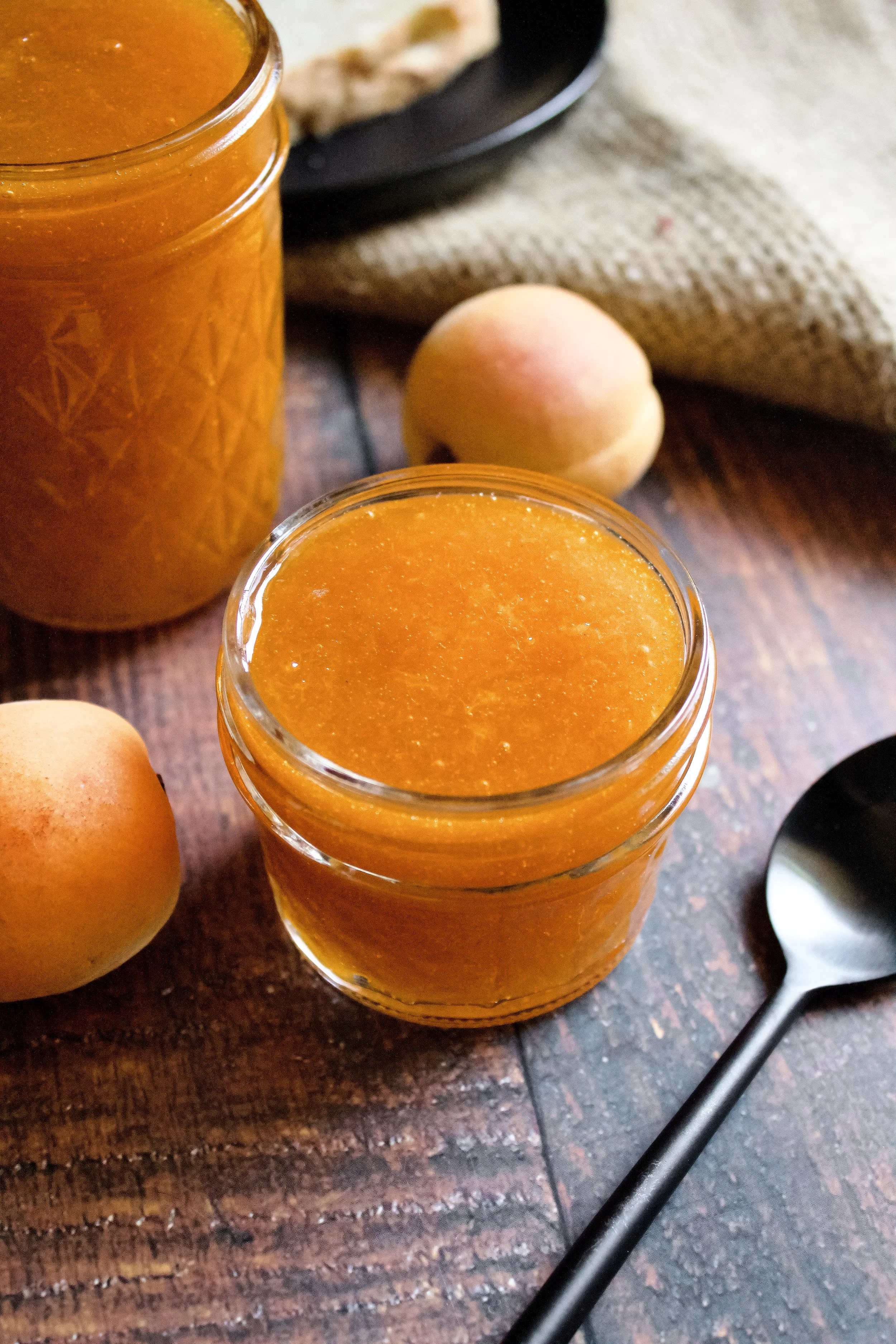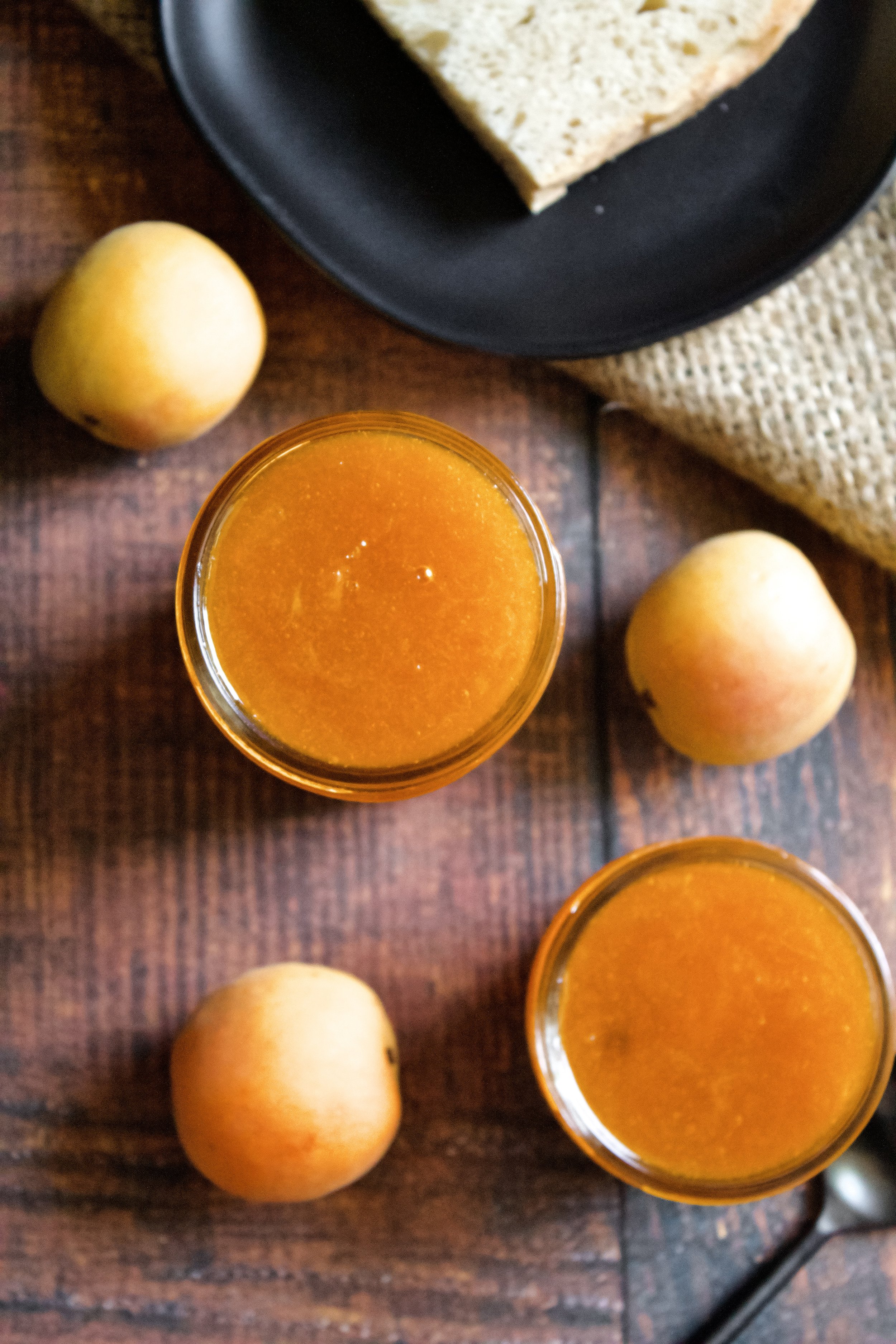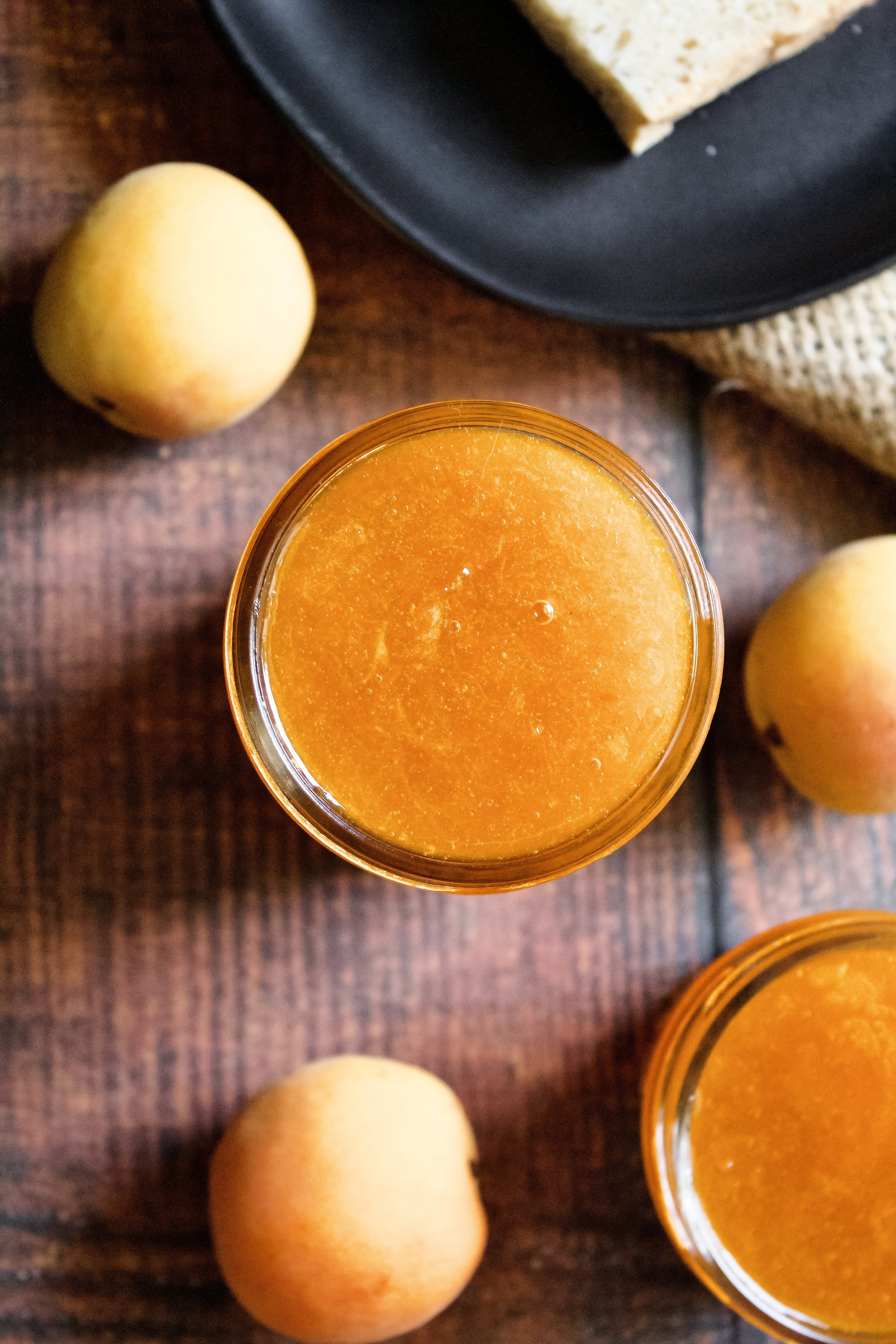Apricot Jam
Sweet yet tart and full of fruity flavor, this jam is simple and uses up one of summer’s most underrated fruits. Pick some up at your farmers market this week and try this lovely jam!
This post may contain affiliate links from which, at no additional cost to you, I may earn a small commission to keep this site running. Only products I myself would or do use are recommended.
Guys. Today was rough. We got back from Oregon last night. Which, by the way, why do vacations involve so much pack and unpacking then packing again to go home just to unpack it all? It’s ridiculous and now I’m so tired.
But to top it off, I made the super wise decision to take both of my cats to the vet at 8am today. Let’s just say it was not exactly easy carting two howling, heavy cats to and from the vet by myself. At least I had my daughter to…open the door to the vet’s office?
Anyway, I just wanted to complain for a moment.
Now for some jam! Anyone else always think of Monica from Friends when you think about jam? Just me? Okay.
I know jams aren’t exactly difficult, but there is still a bit of method to each kind. Some need water or sugar or a thickening agent. And your desired consistency plays a major role in how you’ll make them—thick and scoopable or thinner and more spreadable?
Thus, I’m here to give you a simple recipe that’s going to give you a perfect apricot jam without any fuss!
Why this recipe works
Since apricots have enough natural pectin, you can usually make a good jam (that’s on the thinner side) without any added thickening agents. This means it can be canned and stored at room temperature. Plus, it’s just simpler to make—no worrying that something like cornstarch will get clumpy and weird.
There are two tricks to a good apricot jam: the right amount of sugar and cooking it for long enough. Since apricots are naturally somewhat tart, you obviously need some sugar. But adding too much will make the jam both runny (since sugar turns to liquid when heated) and sickly sweet. We want flavor, not just the taste of sugar. And cooking this long enough allows it to reduce and thicken, both creating a jammy consistency and deepening the apricot flavor. Win win!
Key ingredients
Apricots. I chose not to peel mine, as the peel will break down during cooking and adds both nutrients and a bit of thickening. Plus, peeling stone fruit is hard.
Sugar. I used granulated, but you could use brown or any type of natural sugar (raw, coconut, etc.) or sugar substitute. If using a substitute, start with half the amount called for and adjust to taste as it cooks.
Lemon juice or water. I used lemon juice since it’s summer and I was using this jam in thumbprint cookies. If you want a warmer flavor, use water (and add a few dashes of cinnamon!).
How to make apricot jam
1. Dice apricots. As mentioned above, there’s no need to peel these, as the peel will break down during cooking. If not using organic, be sure to wash and dry the apricots before dicing.
2. Cook apricots, lemon juice, and sugar. You can mash the apricots with the side of your spoon or spatula, or with a potato masher. They will eventually break down on their own, but I’m impatient and like the help them along.
3. Cook until thickened. It will thicken slightly as it cools. Be aware that it can take 20 or so minutes to thicken, so turn the heat down and let it simmer on its own until thickened.
4. Seal well to store. Use right away or store in the fridge. It will last, well-sealed in the fridge for about 1 month or in the freezer 2-3 months.
Enjoy!
Pairs well with:
No Bake Cheesecake (sub this for the cherry pie filling)
Sub for the peaches in this Peach and Vanilla Bean Cream Tart
Add a little cinnamon and sub for the peach compote in this Ginger Bourbon Peach Cake
Tips and FAQ’s for this recipe
Can I sub peaches?
Yes! I have a similar recipe, this ginger bourbon peach compote, that uses ginger, cinnamon, and bourbon. This apricot jam is the summer, brighter cousin to that jam, but peaches would work just as well and create a slightly sweeter jam. You may need to reduce it longer, as peaches are usually a bit juicier.
Is lemon juice or water better?
Both are just fine. I think lemon juice helps make this a bright, summery jam. But water is fine, too. It’s all about what you have on hand and if you want that subtle hint of lemon flavor in the end.
Can I can this jam?
I think so? I know that’s not super helpful, but as far as I know, this is safe to can and keep at room temperature as long as you follow all proper canning and storage protocols, which includes sanitizing the cans and sealing them in a particular way using heat. If you add cornstarch, it is no longer suitable for room-temperature storage.
Can I add cinnamon?
Yes! Any warm spices, such as cinnamon or ginger work well here. However, I do suggest using water instead of lemon juice, since the apricots are already tart and you don’t want the flavors conflicting. I’d start with about 1/2 teaspoon then adjust to taste. If you do add cinnamon, I also suggest using brown sugar (see below) for a warmer flavor overall.
Can I use a different sweetener?
Absolutely! Brown sugar (and a bit of cinnamon—see above) is a great alternative. Or you can use a natural sugar such as raw, coconut, etc. Or you can use a low- or no-calorie sweetener, like monk fruit, stevia, allulose, etc. If using a low- or no-calorie sweetener, start with half the called for amount and add more to taste as it cooks, since those tend to be more potent. If you want to use a liquid sweetener, such a honey or maple syrup, you’ll likely need a little cornstarch to thicken it. Just add 1/2 tablespoon cornstarch to 1 tablespoon lemon juice or water. Whisk well then slowly stream into to the jam, stirring constantly, after it’s nearly done simmering. Cook 5-10 minutes more to thicken.
Can I use frozen apricots?
You can use frozen apricots, but you may not end up with a thick, sturdy jam and the flavor may not be as vibrant. If you’re planning to use this as a cake filling or in a dessert that might need some structure, you’ll want to defrost and drain the apricots first then add a bit of cornstarch (1/2 tablespoon whisked into 1 tablespoon lemon juice—slowly stir into jam when it’s nearly done simmering and cook 5-10 minutes more). If you plan to use this as more of a spread and the sturdiness isn’t a concern, you can just use the frozen apricots straight from the freezer. Cooking time will vary depending on your stove and how frozen the apricots were.
Apricot Jam
- total time: 20-25 minutes
yields: about 1 ½ cups
Ingredients:
- 1 pound (453g) fresh apricots
- 1 cup (200g) granulated sugar (or sugar of choice*)
- 2 tablespoons (28g) freshly squeezed lemon juice or water
Instructions:
- Wash and dry the apricots. Halve and remove the pits. Dice into roughly ½ inch chunks.
- Place apricots, sugar, and lemon juice in a medium saucepan. Cook over medium heat, stirring frequently until the apricots have broken down into a thin jam consistency. You can help them along by mashing them against the side of the pan with the spatula.
- Once the apricots have broken down, turn the heat to low and let simmer, stirring frequently, until thickened to a jam consistency. Jam will thicken only slightly once cooled.
- If not using right away, let the jam cool for a few minutes then place in a tightly sealed jar in the fridge. Jarring it while still warm will help create a tighter seal.
Enjoy!
Jam can be stored in the fridge for about a month, or frozen for up to 3 months (depending on your freezer).
*If using a sugar substitute, such as monk fruit or stevia, start with half this amount and increase to taste as the jam cooks.











